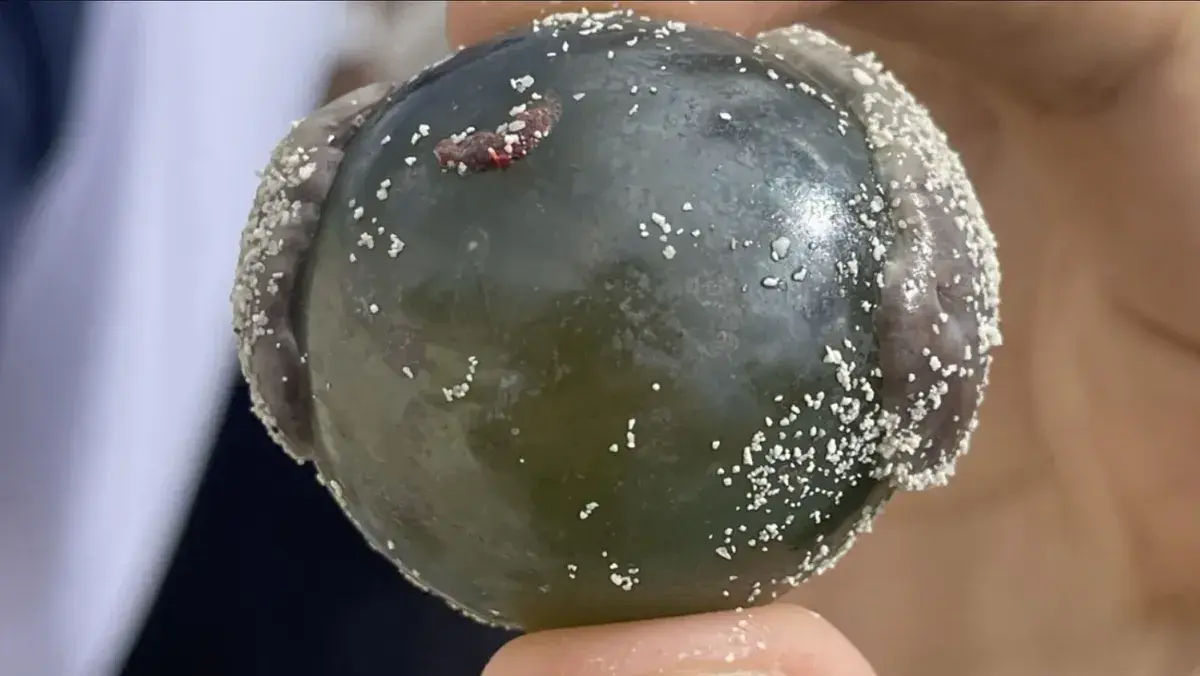 What we’re talking about here is a green , a single-celled, multinucleate organism scientifically known as Valonia ventricosa. It has several unofficial names, such as “sailor’s eyeball,” “sea jelly,” and “marine pearl.” Valonia ventricosa can be found in tropical intertidal zones around the world at depths of up to 80 meters, often nestled among coral reefs, as reported by IFLScience.
What we’re talking about here is a green , a single-celled, multinucleate organism scientifically known as Valonia ventricosa. It has several unofficial names, such as “sailor’s eyeball,” “sea jelly,” and “marine pearl.” Valonia ventricosa can be found in tropical intertidal zones around the world at depths of up to 80 meters, often nestled among coral reefs, as reported by IFLScience.
This natural wonder, with a surface as shiny as a mirror, can take on various colors depending on the number of chloroplasts in its cells: bright green, turquoise, silvery, and even a dark hue. Chloroplasts, or organelles, perform photosynthesis, providing the organism with solar energy.

The size of the “sailor’s eyeball” ranges from the diameter of a pinhead to 5 centimeters, depending on the content of the vacuole—the space within the cell wall. An interesting feature of Valonia ventricosa is the absence of capillary pores in its membrane: water enters the cell through simple diffusion.
According to marine biologists, V. ventricosa is a single-celled organism that can contain the nuclei of many cells. This is because Valonia ventricosa is a coenocytic organism, meaning it consists of a mass of cytoplasm containing numerous nuclei that are not separated by cell walls.
If the alga is punctured, it can lead to the emergence of new V. ventricosa, as only one nucleus is sufficient for the development of new organisms.
Researchers from the in Connecticut, USA, described Valonia ventricosa as “something like a Tesla plasma ball”: a glass sphere filled with rarefied gas that emits a magical glow.
Recently, the NOAA Ocean Exploration mission discovered another mysterious glowing sphere on the ocean floor near Alaska, dubbed the “golden egg.” It was spotted at a depth of 3.1 kilometers, attached to a rocky surface. Interestingly, the enigmatic object had a hole in it. One of the researchers commented, “Something was trying to get inside or escape from it.”
